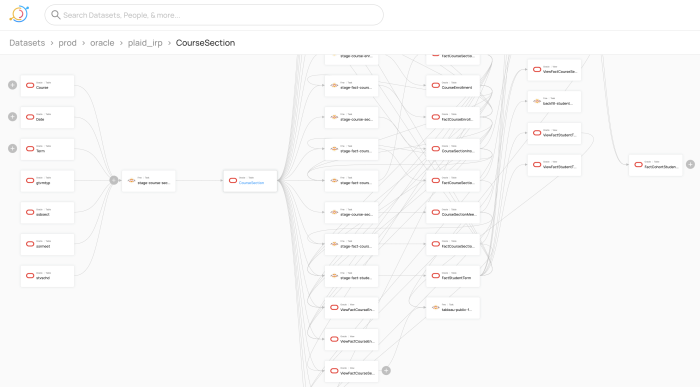How Metadata Management Tools Support SEM

by Clara Yeung
Strategic enrolment management (SEM) is a long-term process that engages students from the time they are prospects to the time they graduate and beyond. If the school admits the right students and supports their success, the process is better for everyone – but how do you successfully implement strategies to support SEM? Any large organization is bound to have myriad data across several different databases and cloud systems, and institutions of higher education are no different, with data living in:
- Student information systems (SIS)
- Customer relationship management systems (CRM)
- Visualization tools or cloud tools
- Shadow databases ranging from Excel to systems not enterprise-integrated
As a result, the data you need may be scattered and have unclear data origins, ownership, and definitions. A common scenario we have encountered in our work with institutions of higher education is that a surprising amount of data analysis requires perusing thousands of fields, hundreds of tables and dashboards, and speaking with many different teams in order to pin down definitions and data origins since often most of the information lives in the mind of a specific person rather than in any form of documentation. In working to bridge gaps we identify, at times we found that an error in the data’s definitions, origins, and/or lineage led to inaccurate data reporting and consequently the inability to effectively implement change to meet organizational initiatives.
Implementing a metadata management tool solves many of these potential hindrances to effective SEM, in its ability to support:
- Data Discoverability
Search and discover datasets from the SIS, CRM, data warehouse, dashboards, and more to review or document definitions and see how they relate to other pieces in the system - Data Observability
Trace data lineage to discover the data’s origins and how it changed over time (e.g., understand where a base table in Banner gets used in the data warehouse)
Use of documentation and tags help you to understand what a calculated field means, what a field from the source system means - Data Governance
Access to a business glossary to determine definitive definitions for key terms
Visibility into data owners and stewards so you know to whom you should pose questions or report concerns to about particular datasets
Manage user access to data based on their role within the organization
In support of these goals, we have worked with institutions of higher education to implement a managed service based on the open-source metadata management tool DataHub. Plaid’s managed service of the platform combines technical, operational, and business metadata to provide a more thorough view of your institution’s data entities. The tool allows users to act on changes in metadata in real time, browse and search over a continuously updated catalog of datasets, dashboards, charts, and models. It’s the one-stop shop for documentation, schemas, ownership, lineage, pipelines, data quality, and usage information, connecting to the myriad campus and vendor systems. As a result, the tool promotes trust in data by helping users understand where data comes from and how it is used and changes over time.

To learn more about how Plaid can support your higher education institution with a metadata management tool, take a look at our Introduction to DataHub webinar. The video provides an overall introduction to the tool focused on higher education use cases, including:
- What is DataHub and how can it help higher education?
- Connecting DataHub with a student information system-like database and a data warehouse, and ingesting metadata about tables, columns, and relationships
- Ingesting metadata about FME workflows. FME is a data integration tool and is used here for moving data into the data warehouse from the student information system
- Ingesting metadata about Tableau workbooks, dashboards, worksheets, data sources, calculated fields, relationships, etc.
- Demonstrating lineage between Tableau, the data warehouse, FME workflows (data integration tools), and a student information system-like database
Explore Plaid Govern and learn about metadata management by booking a workshop or demo for your office.
